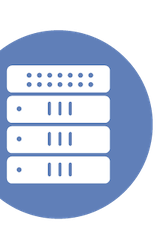The AI Factory in Action: Basketball play classification with Hewlett Packard Enterprise
Event: AI Infrastructure Field Day 3
Appearance: HPE presents at AI Infrastructure Field Day 3
Company: HPE
Video Links:
- Vimeo: The AI Factory in Action: Basketball play classification with Hewlett Packard Enterprise
- YouTube: The AI Factory in Action: Basketball play classification with Hewlett Packard Enterprise
Personnel: Mark Seither
This session provides a live demonstration of a practical AI application built on top of HPE Private Cloud AI (PCAI). The speaker, Mark Seither, showcases a basketball play classification application that leverages a machine learning model trained on PCAI. This model accurately recognizes and categorizes various basketball plays, such as pick and roll, isolation, and fast break. The demo highlights how the powerful and predictable infrastructure of PCAI enables the development and deployment of complex, real-world AI solutions. This example illustrates the full lifecycle of an AI project—from training to deployment—on a private cloud platform.
The presentation details the development of an AI application for an NBA team that focuses on video analysis, starting with the specific use case of identifying player fatigue. The initial approach involved using an open-source video classification model called Slow Fast, which was trained to recognize basketball plays such as pick and rolls, and isolations. To create a labeled dataset for training, the presenter manually extracted and labeled video clips from YouTube using tools like QuickTime and Label Studio. The model, trained on a small dataset of labeled plays, demonstrated promising accuracy in identifying these plays, and although it had limitations, the presentation illustrates a basic but functional model.
The speaker then discusses the next steps involving HPE’s Machine Learning Inferencing Service (MLIS) to deploy the model as an endpoint. This would allow the team to upload and classify video clips more easily. Furthermore, he plans to integrate the play classification with a video language model (VLM) enabling the team to query their video assets using natural language, such as “Show me every instance of Steph Curry running a pick and roll in the fourth quarter of a game in 2017.” He also showcased the RAG capabilities of the platform using the NBA collective bargaining agreement to answer specific questions, highlighting the platform’s potential to provide quick, valuable insights to customers.







